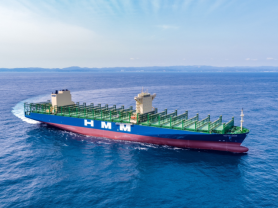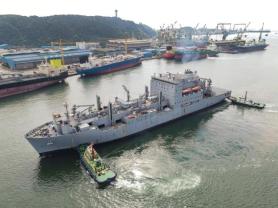
SEOUL, November 27 (AJP) - When South Korea’s Nuri rocket lifted off before dawn on Thursday, attention naturally turned to the spacecraft streaking into the sky. But the success of the launch was rooted firmly on the ground — specifically, in the complex launch system engineered and operated by HD Hyundai Heavy Industries.
For the fourth mission in a row, the country’s largest shipbuilder played a pivotal but largely unseen role in enabling one of South Korea’s most advanced technological achievements.
Since completing the second launch pad at the Naro Space Center in 2020, Hyundai Heavy has overseen every element of Nuri’s launch system. The company independently designed, manufactured and installed the ground mechanical structures, fuel-supply lines and control equipment that power the rocket from the final seconds of the countdown through liftoff. Engineers also execute pre-launch checks, coordinating hundreds of components that must operate flawlessly to send the rocket safely skyward.
What makes the system particularly significant is its 100 percent domestic technology rate — a benchmark that marks a clear departure from past reliance on foreign equipment. The fully homegrown infrastructure is now viewed as a core national asset, strengthening South Korea’s ability to conduct launch operations independently as its space program expands.
Hyundai Heavy began venturing into space infrastructure in 2007 during the Naro rocket era. The company leveraged its deep engineering background — traditionally applied to ship hulls, offshore platforms and industrial systems — to develop new expertise in cryogenic fueling, high-pressure operations and launch safety. Over nearly two decades, this foundation has evolved into a sophisticated capability validated by each of Nuri’s successful flights.
The Nuri program is expected to serve as a bridge to next-generation launch vehicles aimed at lunar exploration, satellite deployment and broader participation in global space supply chains. Hyundai Heavy’s proven launch operations are likely to anchor many of those projects, positioning the company as a key contributor to South Korea’s increasingly ambitious space agenda.
A spokesperson for HD Hyundai Heavy Industries said Thursday’s launch underscored the maturity of the company’s infrastructure.
“The success of the fourth launch confirms the stability of our domestically developed launch system,” the official said, asking not to be named. “We will continue supporting the fifth and sixth Nuri missions and actively participate in next-generation launch vehicle projects to help advance South Korea’s aerospace industry.”
For a company best known for supertankers and shipyards, the reliability of Nuri’s launch system has become a new point of pride — quiet work that ensures the rocket’s flame rises cleanly into the sky, mission after mission.
* This article, published by Aju Business Daily, was translated by AI and edited by AJP.
Copyright ⓒ Aju Press All rights reserved.



